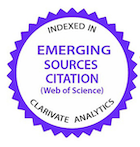A STUDY OF ROOT CANAL MORPHOLOGY OF Cebus apella TEETH
Keywords:
Ciência Básica, Animais SilvestresAbstract
Realizou-se um estudo anatômico em dentes do Cebus apella, para análise da anatomia interna do canal radicular dessa espécie, normatizando seu uso como modelo experimental. Utilizaram-se doze animais adultos. Após a remoção do tecido orgânico, os dentes foram removidos, seccionados e fotografados, sendo analisados com um estereomicroscópio. Os resultados mostraram que os dentes apresentaram características semelhantes às dos seres humanos, mas com algumas peculiaridades, tais como: a anatomia do canal radicular variou de oval para circular; nos caninos inferiores, os canais são semelhantes a um rim, o que reflete o contorno externo da raiz; nos molares superiores, os canais mesiobucal e distobucal são ovais, seguindo o contorno geral do dente. Os autores concluem que esta espécie pode ser utilizada como modelo em pesquisas odontológicas, principalmente em estudos do tratamento do sistema de canal radicular.PALAVRAS-CHAVES: Anatomia, dentes, Cebus apella.
Downloads
Download data is not yet available.
Downloads
Published
2008-12-21
How to Cite
LIMA, Rafael Rodrigues; ARAÚJO, Leila Marques; AFONSO, Priscilla Rocha; LAMARÃO, Suely Maria. A STUDY OF ROOT CANAL MORPHOLOGY OF Cebus apella TEETH. Brazilian Animal Science/ Ciência Animal Brasileira, Goiânia, v. 9, n. 4, p. 1056–1061, 2008. Disponível em: https://revistas.ufg.br/vet/article/view/1129. Acesso em: 19 dec. 2025.
Issue
Section
Veterinary Medicine
License
Copyright (c) 2008 Brazilian Animal Science/ Ciência Animal Brasileira

This work is licensed under a Creative Commons Attribution 4.0 International License.
Authors who publish with this journal agree to the following terms:
- Authors retain copyright and grant the journal right of first publication with the work simultaneously licensed under a Creative Commons Attribution License that allows others to share the work with an acknowledgement of the work's authorship and initial publication in this journal.
- Authors are able to enter into separate, additional contractual arrangements for the non-exclusive distribution of the journal's published version of the work (e.g., post it to an institutional repository or publish it in a book), with an acknowledgement of its initial publication in this journal.
- Authors are permitted and encouraged to post their work online (e.g. in institutional repositories or on their website) prior to and during the submission process, as it can lead to productive exchanges, as well as earlier and greater citation of published work (See The Effect of Open Access).



























